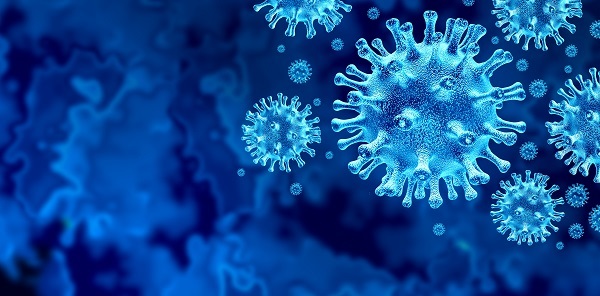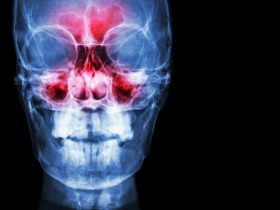Severe Acute Respiratory Syndrome Coronavirus-2 (SARS-CoV-2) has caused a worldwide pandemic that has never happened before in history. Infection with SARS-CoV-2 can happen when a person breathes in particles as small as aerosol or as big as droplets or when the respiratory epithelium is directly exposed to the virus. Since up to 90% of all air comes in through the nose, it makes sense that the sinonasal cavities could be important places for SARS-CoV-2 infection. The SARSCoV2 host cell surface receptor, angiotensin-converting enzyme 2 (ACE2), is also found in the nasal mucosa.
There is more and more evidence in COVID-19 that sinonasal involvement is important. The sinus cavity could be a significant way for an infection to get into the body. For instance, a virus shed from the sinus cavity could be a significant transmission source. The high number of virus secretions from the nose may also mean a higher risk of getting a healthcare-associated infection (HAI) during rhinology procedures.
Even though the symptoms of SARS-CoV-2 among the patients who died are always found in the lower respiratory tract, clinically useful information about complications in the nose has been identified. For example, anosmia without nasal obstruction, for example, appears to be a highly specific indicator of COVID-19. At the recent American Rhinologic Society (ARS) 68th annual meeting, held from September 9, 2022, through September 10, 2022, in Philadelphia, PA, researchers from the Department of Otolaryngology/Head and Neck Surgery at the University of North Carolina at Chapel Hill reported their findings in a poster titled “Sinonasal Complications of SARS-CoV-2: A Single Center Case Studies “.
This study examined seven patients with sinonasal disease and concurrent SARS-CoV-2 infection. Five were males (aged 48, 25, 11, 3, and 15 years), and two were females (aged 4 and 28). Initial symptoms ranged from asymptomatic infection to mild diseases like nasal obstruction or cough or more severe sequelae like proptosis, epistaxis, or neurologic changes. SARS-CoV-2 tests were positive from 1 to 12 days after symptom onset, with two patients receiving SARS-CoV-2-directed treatment. Also, 6 of the seven patients needed surgery, and those with abscesses required long antibiotic courses.
Physical and imaging examination indicated hemorrhagic adenoidal tissue in patient 1; Left frontal epidural hematoma and sinus opacification in patient 2; right orbit subperiosteal abscess and right paranasal sinus disease in patient 3; bilateral frontal subdural abscess with orbital extension bilaterally in patient 4; left frontoparietal to occipital subdural empyema, scalp abscesses, right periorbital abscess, and superior sagittal sinus thrombosis in patient 5; right holo-hemispheric subdural empyema and left frontal sinus opacification inpatient 6; left front temporoparietal abscess, thrombosis of the left transverse sinus, left cavernous sinus and bilateral internal jugular veins in patient 7.
It was concluded that early identification and treatment of sinonasal disease in COVID-19 patients is critical to minimize poor outcomes. As the COVID-19 pandemic spreads and we learn more about it, sinonasal complications will be uniquely brought to the forefront. The vital roles of sinonasal in infection, transmission, and symptoms may aid in identifying SARS-CoV-2-infected individuals.




